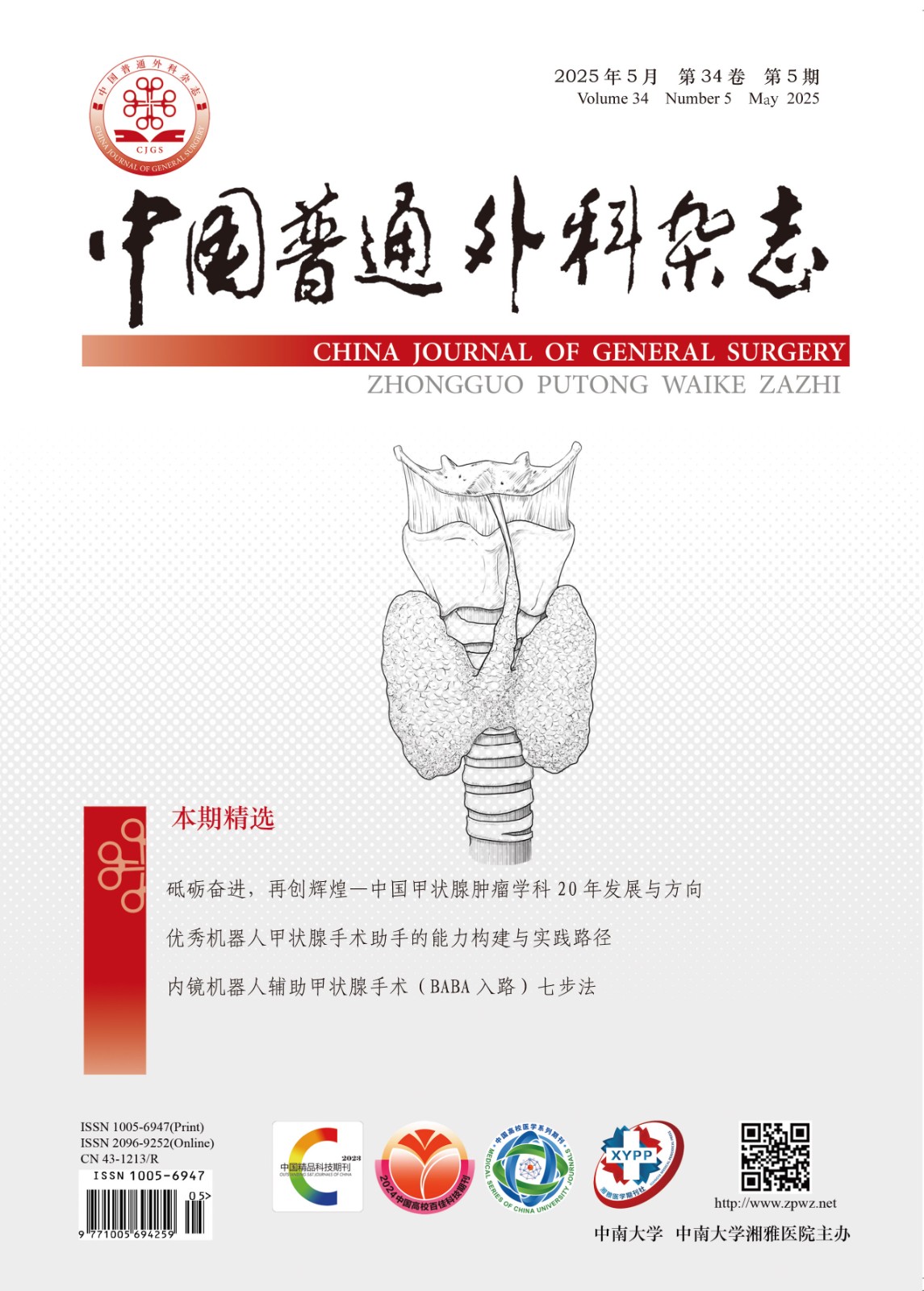Abstract:Abstract:Objective:To investigate the factors that influence the prognosis of differentiated thyroid carcinoma(DTC).
Methods :Retrospective analysis the clinical data of 429 cases of DTC treated in our hospital in 9 years was done, and monoand multifactorial analyses related to the prognosis of DTC were performed.
Results:The overall 5, 10year survival rates were 95.2% and 88.7% respectively. Monofactorial analysis showed that age, tumor size, T stage, distantmetastasis, treatment modallty, recurrence, and clinicopathologic stage were prognostic factors (P<0.05); gender, pathological type, and lymph node metastasis had no significantce (P>0.05). Cox multifactorial analysis showed that the T stage, treatment modality and clinicopathologic stage were independent prognostic factors of DTC(P<0.05).
Conclusions:Age, tumor size, T stage, distantmetastasis, treatment modality, recurrence, and clinicopathologic stage were main prognostic factors, and T stage, treatment modality and clinicopathological stage were independent prognostic factors of DTC.

